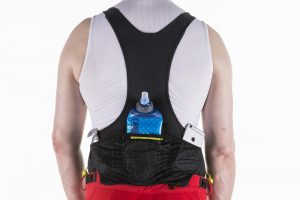Mid-pack race wheels with race winning performance and reliability
DT Swiss X1700 Spline TWO wheelset review
Wheels are one of the bits of kit that cross country racers obsess over. At a time when trail riders are thinking about strength above all else, the typical XC racer is still focused on weight and speed. The mid priced DT Swiss X1700 Spline TWO wheelset is a good example of when the two requirements can come together.
>>> Best mountain bike wheels: a buyer’s guide
A Swiss-Army knife of options
DT Swiss produces the X1700 in several guises to cater for the full gamut of frame and fork standards. Both BOOST and non-BOOST are catered for, as well as 27.5” and 29” diameters. A nice touch is that non-BOOST axle styles are supplied with both thru-axle and QR end caps. All feature DT’s Competition straight-pull spokes with a stronger three cross lacing pattern both front and rear; so no weird spoke patterns to reduce weight at the expense of strength and stiffness here. Steel eyelets reinforce the spoke drillings in the rim.
DT Swiss hub internals have a reputation for reliability and being easy to maintain. With this is mind it’s good to see that the X1700 doesn’t break with tradition – you are still able to strip the hubs down without using tools. At the heart of the rear wheel the X1700 uses the same guts as DT’s 350 hubset. This uses DT’s Star ratchet system, consisting of two grooved rings rather than pawls and springs to provide quick engagement. The polished hub bodies are not only pretty but also feature machining to pare away any unwanted excess.
DT Swiss X1700 Spline TWO

The X1700 uses a polished and machined hub body designed for straight pull spokes
Narrow rim issues
The X1700 utilises a 20mm rim diameter that some might consider a tad old school/traditional, when compared to Mavic’s Crossmax’s 22mm and the old favourite, Stan’s Crest at 23mm. This definitely means it works best with a narrower tyre diameter, so it’s fine for riders still using a 2.0 or 2.1inch tyre width. There has been a recent move by several tyre brands to using wider tyres as the benchmark, in which case narrower rim width can have a negative impact on performance. Fortunately most tyre brands still produce the narrower diameters, but it is something to be aware of when choosing a new set.
Easy tubeless
The good news for riders is the X1700 come ready setup for tubeless use with valves and tape installed. Seating our benchmark Maxxis Ardent Race tyre required little more than a trackpump. Air loss has also been impressively minimal throughout the test, even during a practice dry run with no sealant it happily stayed sealed and solid for a couple of days.
>>> How to set up tubeless tyres
The ride
During testing a wheel will often demonstrate a behaviour trait that might impact the ride in one way or another. In the case of the X1700 however, they really just get on with the job in hand without much fuss. At nearly 1.65kg there are much lighter wheels available, but these are on par with most rivals, such as the Mavic Crossmax Elite. The ride quality is, as expected, suitably sprightly for a race wheel. The three-cross spoke pattern and very even tension make both wheels plenty stiff enough for sprinting and climbing during a race or hard training. Fortunately this stiffness doesn’t result in the expected harsh ride. You could happily run these on a light carbon hardtail without needing a season ticket to the chiropractor.

Steel eyelets reinforce the spoke beds
Reliable reliability
Throughout the testing period the wheels remained true and spoke tension also displayed remarkable evenness (even after some relatively hard hits). Just be aware that DT has specced aluminium nipples, so take care if adjusting after a hard season of use as they can round off. Bearings are still running as smooth as the first day, but a thin coating of black gunky grease was found inside the XD freehub body and star ratchet rings. As stated before, the hub can be stripped without needing any tools so it is an easy job to clean and re-grease regularly. You can even swap the star ratchets to change the pick-up rate depending on how fast you like it.
I used the X1700 with both Maxxis Ikon 2.1 and Ardent Race in both 2.2 and 2.35 sizes. In use the narrower rim width rounds off the wider tyres, effectively changing their performance. It was noticeable that the Ikon and narrower Ardent Race provided better cornering and were less inclined to fold over under harder riding. It’s worth considering your normal choice of tyre width before committing to the purchase… but for racing snakes that baulk at anything over 2.1, this isn’t going to be an issue.
Verdict
There’s no faulting the performance of the X1700’s. XC racers will love the stable and stiff ride-feel that aids the transfer of power so required from a race bike. The simple maintenance routine is also pretty appealing to keep them in tip-top condition. The narrow rim width can be an issue if you are used to a wider tyre, but for riders sticking to widths less than 2.2 it won’t be an issue.
















